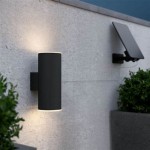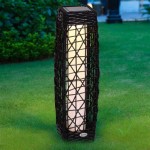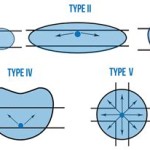Outdoor Sculpture Lighting Techniques for Enhancing Ambiance and Appeal
Outdoor sculptures captivate the imagination, adding artistic flair to gardens, public spaces, and architectural landmarks. Illuminating these sculptures at night transforms them into enchanting focal points, enhancing their visual impact and creating a magical ambiance.
1. Directional Lighting for Focalization
Highlight specific features of your sculpture by using directional lighting techniques. Spotlights and floodlights can cast a focused beam of light, emphasizing key details, textures, and contours. Position the lights strategically to draw attention to the intended areas, creating a dramatic effect that captivates the viewer.
2. Backlighting for Silhouette Effects
Create a silhouette effect by placing lights behind the sculpture. This technique allows the sculpture's form to be defined by the light emanating from its edges. The resulting silhouette can be dramatic and ethereal, highlighting the sculpture's profile against the surrounding environment.
3. Uplighting for Enhancing Elevation
Uplighting is a technique that involves placing lights at the base of the sculpture, casting light upwards. This technique emphasizes the sculpture's verticality, enhancing its perceived height and creating a sense of grandeur. Uplighting can be particularly effective for sculptures with intricate details or graceful curves.
4. Grazing Lighting for Texture Revelation
Grazing lighting involves positioning lights at an angle that glides along the sculpture's surface. This technique reveals the subtle textures, patterns, and imperfections of the sculpture, enhancing its visual appeal. Grazing lighting can create a sense of depth and dimensionality, bringing the sculpture to life in the darkness.
5. Color Lighting for Emotional Impact
Colored lighting can transform the emotional impact of outdoor sculptures. Warm colors, such as amber and gold, create a cozy and inviting ambiance, while cool colors, such as blue and green, evoke a sense of tranquility and serenity. Experiment with different colors to find the ones that best complement the sculpture's aesthetic and the desired atmosphere.
6. Timer and Sensor Controls for Energy Efficiency
Incorporate timers or sensors into your lighting system to maximize energy efficiency.Timers can be programmed to illuminate sculptures only during specific hours, while motion sensors can activate lights when movement is detected. These controls help save energy and reduce light pollution, while ensuring that your sculptures are illuminated when they need to be.
Conclusion
Outdoor sculpture lighting is an art form in itself, transforming sculptures into captivating displays of illumination and beauty. By applying these essential techniques, you can enhance the ambiance of your outdoor spaces, highlight the artistic merits of your sculptures, and create a visually stunning spectacle that will delight and inspire.

Popular Techniques For Statue Lighting Houston Lightscapes

Tips For Lighting Statues Enhanced Outdoor Design

Garden Lighting

Types Of Outdoor Landscape Lighting 7 Must Have Fixtures

Artistic Outdoor Lighting Illuminating Works Of Art For Your Garden Q Blog

Lighting Garden Sculptures Hua Outdoor

56 Art Installations With Led Lights By Etere

How To Use Landscape Lighting Techniques

Best Outdoor Wall Lighting Ideas For Your Garden Bondilights

56 Art Installations With Led Lights By Etere
Related Posts







